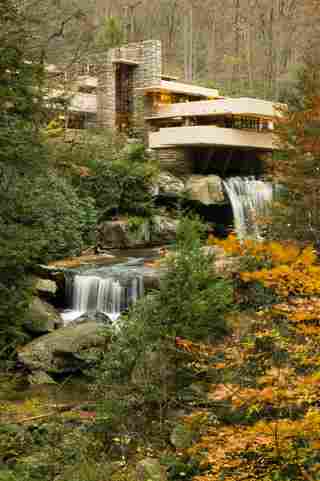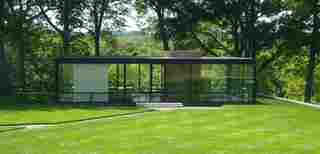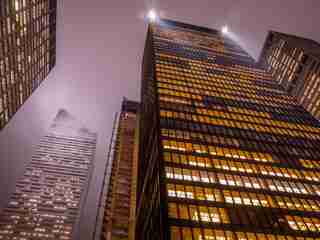Frank Lloyd Wright and Philip Johnson’s Rivalry Is Chronicled by Hugh Howard in Riveting Book
Few people have had as monumental an impact on American architecture as 20th-century luminaries Frank Lloyd Wright and Philip Johnson . Often overlooked, however, is their intense rivalry, which is chronicled in the book Architecture’s Odd Couple by Hugh Howard (Bloomsbury Press, $20). Although belonging to slightly different generations (Wright was born in 1867, Johnson in 1906), the prolific talents spent decades tangling, at times trading effusive praise and at other moments taking very public swipes at each other. Central to this tension was their competing aesthetics, underscored during the pair’s first—and quite tumultuous—experience working together for the Museum of Modern Art’s 1932 installation, Modern Architecture: International Exhibition .
Following the MoMA exhibition, in 1937, Wright completed one of his most famous residences, an iconic commission now known as Fallingwater, which reinvigorated his faltering career. Johnson offered a riposte to Wright’s landmark a decade later, crafting the elegant Glass House on his New Canaan, Connecticut, estate to much fanfare. The book encompasses not only the early years but also the intervening ones between those projects and Wright’s death, in 1959. Howard, a noted historian and author of 11 architecture titles, paints an expert picture of the relationship, during which the architects challenged each other and ultimately produced some of the nation’s most enduring architectural works.

Frank Lloyd Wright completed Fallingwater in 1937, reviving his stalled career and creating an instant landmark in rural Pennsylvania.

Located in New Canaan, Connecticut, Philip Johnson’s modernist Glass House was finished in 1949 and used as his personal retreat.

Johnson worked with fellow modernist Mies van der Rohe on the Seagram Building , which was completed in midtown Manhattan in 1958.
Some 40 blocks north, Wright’s Guggenheim Museum , with its organic spirals and monumental light-filled atrium, opened in October 1959, six months after the architect’s death.
Architecture’s Odd Couple by Hugh Howard (Bloomsbury Press, $20.)